|
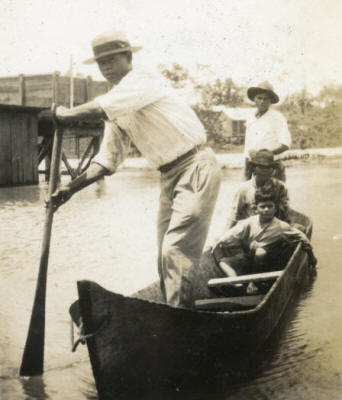 THIS IS THE FOURTH PAGE
of documents for the FIRST HALF of 1931
on Nicaragua's Caribbean Coast region, housing
materials dated in the eight days from April 22 to April
29.
THIS IS THE FOURTH PAGE
of documents for the FIRST HALF of 1931
on Nicaragua's Caribbean Coast region, housing
materials dated in the eight days from April 22 to April
29.
Participant & eyewitness accounts
of the Sandinista offensive continue
on this page, starting with the
letter of Moravian missionary Mrs.
Rufus Bishop, near Musawas, on the
killing of Bro. Bregenzer and the
fear & tumult it sparked among the
Christianized Indians in the zone —
themes continued in missionary David
Haglund’s letter of the same date.
In Cabo Gracias a Dios, Collector of
Customs Lisandro Salazar offers a
vivid description of the rebels’
brief April 15 seizure of the
normally sleepy port town. The
patrol report of Lt. Darrah offers a
vivid narrative of events in Logtown
from the afternoon of April 11 till
the morning of the 13th — a story
told from a different angle in the
letter of commendation for Capt.
Wood. Capt. Inman’s patrol
report describes his troops' efforts
to chase down the retreating rebels,
skirmishing with their rear guard (&
killing four) while the main body of
rebels, under Col. Abraham Rivera,
hightails it back up the Coco River
past Sacklin toward Bocay.
Inman’s description of Saklin and
Adolfo Cockburn’s untouched store
there might fruitfully be read
alongside Jefe Director Gen.
Matthews’ letter of 27 April, which
shows that Cockburn remains a major
headache for the Marines & Guardia,
who know he supports the rebels but
can’t prove it, and are stymied by
his status as Deputy in the National
Assembly, which grants him immunity
from arrest. We see the
Guardia trying to improve their
intelligence-gathering capacities in
Capt. Schwerin’s lengthy summary of
information obtained from two
“secret agents” sent into the
“bandit” zone. Back in Las
Segovias, eleven days after Gen.
Pedro Blandón’s death, Sandino seeks
to regroup his troops and smooth
over tensions between Sgt. Major
Ladislao Palacios and Gen. Carlos
Salgado, as we see in his never
before published letter of April 24.
The dramatic events of the first weeks of April 1931
will continue to echo loudly in the
weeks & months ahead.
|
|
PERIOD MAPS
|
|
1894 mosquito
shore

27 MB,
library of congress
|
1920s
Standard Fruit

6.5 mb,
US National archives
|
1928 Rio wanks
Patrol

3 mb, us
national archives
|
1931 Moravian

2.4 mb,
comenius press
|
|
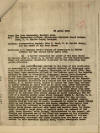
|
23 April
1931.
Recommending Captain John C. Wood, U. S.
Marine Corps, for the award of the Navy
Cross. Col.
John Marston, Bluefields, p. 1.
"23 April 1931 ¶
From: The Area Commander, Eastern Area.
¶ To: The Commanding Officer, Nicaraguan
National Guard Detachment, U.S. Marine
Corps, Managua. ¶ Subject: Recommending
Captain John C. wood, U.S. Marine Corps,
for the award of the Navy Cross. ¶
Reference (a): Captain Wood’s report of
operations in PUERTO CABEZAS for the
period 12-17 April 1931. ¶ 1. I hereby
recommend the award of the Navy Cross to
Captain JOHN C. WOOD, U.S. Marine Corps,
for his exceptionally brave and
courageous leadership described in the
following suggested citation: ¶ FOR
DISTINGUISHED SERVICE in the line of his
profession as commander of a patrol of
the Guardia Nacional de Nicaragua
operating in the vicinity of Logtown,
Nicaragua, on 13 April 1931. Captain
Wood, then executive officer of the
Eastern Area of the Guardia Nacional on
duty in Bluefields, Nicaragua, having
been directed by the Area Commander on
11 April 131 to proceed immediately to
Puerto Cabezas, Nicaragua, to take over
the command of the Department of
Northern Bluefields as a relief for the
late Captain Harlen Pefley, U.S. Marine
Corps, killed in combat the same day,
arrived in Puerto Cabezas at about 2.00
pm 12 April and, after endeavoring to
reassure a panic-stricken town alarmed
by rumors of bandit attacks, proceeded
at 3.00 am, 13 April on a special train
with four enlisted men of the Guardia
Nacional out 120 kilometers of railroad
known to be infested with active groups
of armed outlaws to the relief of a
Guardia patrol under First Sergeant
Clyde R. Darrah, U.S. Marine Corps,
which had been engaged in combat for the
previous twenty-four hours. Taking
personal command of the combined patrol.
Captain Wood at 7.00 am, 13 April,
proceeded by train to Snaki bridge where
he was forced to abandon his train,
marched his patrol nine miles along the
railroad to Logtown where, ably assisted
by two Marine Corps planes equipped with
bombs and machine guns, he vigorously
attacked a large group of bandits under
the command of the jefe, Pedro Blandon,
which attack, characterized by the
prompt, efficient and vigorous use of
the force and weapons at his disposal,
resulted in the deaths of Blandon and at
least twenty of his men and completely
dispersed the other outlaws from the
scene of the action. In this operation
Captain Wood, within twenty-four hours
[...]"
|
|
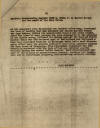
|
23 April
1931.
Recommending Captain John C. Wood, U. S.
Marine Corps, for the award of the Navy
Cross. Col.
John Marston, Bluefields, p. 2.
"[...] 2. ¶
Subject: Recommending Captain JOHN C.
WOOD, U. S. Marine Corps, for the award
of the Navy Cross. ¶ …of his departure
from Bluefields two hundred miles away,
destroyed the band of bandits that had
ambushed and killed Captain Pefley two
days before, killed its notoriously
vicious and cruel leader, saved the
lives of many persons who were
endangered by the presence of the bandit
group, relieved the threat against the
town of Puerto Cabezas which was the
declared goal of the outlaws and
inflicted a loss upon organized banditry
in Nicaragua which had a most
discouraging effect upon the general
offensive then being launched against
the East Coast of Nicaragua. This
remarkable engagement was successfully
conducted with the loss of but one
enlisted Guardia wounded. During the
entire battle Captain Wood distinguished
himself by the display of extraordinary
bravery, coolness and leadership and by
exceptional judgment, initiative and
military ability. ¶ JOHN MARSTON"
|
|
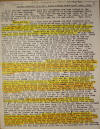
|
1.
23 April 1931.
Letter received from
Mrs. Rufus Bishop
(near Musawas) dated April 23rd, 1931.
To S. H. Gapp, Moravian Church, Bethehem
PA, p. 1.
"It is now well
established that Bro. Bregenzer has been
killed by the bandits in or near
Musawas. That his family is in hiding
somewhere there and has as yet not come
out. That Cape Gracias has been taken by
the bandits and everybody is fleeing
from there. That up the coast, it is not
altogether safe to be and one should
seek for his own safety. Well here, is
our story. ¶ Rufus Bobbie, and I were
over in Dakura for Holy Communion over
Sunday April 12th. On Monday morning as
we were getting ready to come over here
to Sandy Bay, Rufus heard from a man
returned from Bilwi that the bandits had
come out in the lines, and had robbed
and burned some commissaries and had
killed some men. So many stories were
about that we did not know just what to
believe, especially as the Indians have
a way of mixing things so that really
one story appears to be four or five. We
also heard that they were out on the
Wanks again, and some indefinite things
about their being at the Port Cape. On
Tuesday afternoon, of last week we saw
two planes going in that direction, so
then we knew there must be something up
there and that the planes were going to
investigate so we thought, and were
sitting pretty, and I was making the
sewing machine hub and Rufus was doing
some packing of odds and ends and I was
persuading him to wait till the next
week to bother me too much about it, and
by that time I hopes (sic) to have
Bobbie’s suit pretty well under way and
could help. I remember Wednesday
morning, I was just fixing a suit for
Bobbie, and went past a window when I
heard a familiar voice sing out
“Ooooooo” and I shouted to Rufus that
something must be wrong with the
Stortzes because it both looked and
sounded like him. I was scared near to
death for he was carrying the baby and
Edna and Carol were nowhere in sight.
But he told me at once they were a
little way behind him. The bandits had
come to the Port on the day before, and
robbed and he was not sure just what
all, but some of his people told him one
of the first things the leader had said,
“Where is that Parson, I want to see his
blood” and that Bregenzer had already
been killed and how it was done. Before
the bandits arrived at the Port he had a
note for the Haglunds who had left their
children with them since the other scare
in January. I see I am getting a little
mixed. Mrs. Haglund took the children on
Thursday to the Port to spend Friday
there, and Saturday morning started up
the river, thinking all was safe and now
for the children as things had been
quiet for sometime, they met Mr. Haglund
somewhere on the river and were spending
Sunday in Andres and going to Wasla
perhaps Monday morning, if not Sunday
evening, when the people came telling
them the bandits were already in Wasla
robbing the mission house and asking for
him, so he turned back in the gas boat
to the Cape, sent a message to the
Stortzes that they were going to go to
Kruta and Honduras and would stop at a
certain place, where Stortz always rests
going to Kruta, and wait a day for them.
They should come and not stop as it was
really serious this time. We heard
afterward that they just managed to get
to the saw mill where the men helped to
run the boat into a little creek out of
sight and hide in the bush around there
when the bandits were upon them, after
they passed the Haglunds went a little
further up to Klupki and across on foot
poor things, and how we believe they are
with Miss Kreitlow at the Heaths, but we
hope to be sure about them all in a few
more days for the Escupa Fuego which
brought us down returned up the coast
that same night with orders to go and
bring them all down. We have heard
indefinitely that they are in Honduras,
but how safe we do not know and Miss
Kreitlow is also only supposition as far
as I heard, the Port Cape, and while the
Indians had said they would build a
little hut in the bush and keep them
safe, they were afraid the bombing would
scatter the bandits, all through the
bush and they might meet them there,
also they could not have much in the way
of supplies and they little Carol and a
two months old baby who in on the
bottle, and there would be plenty of
mosquitoes. So quite suddenly he decided
to come to Sandy Bay not knowing whether
it were for the best, but he could not
go to Honduras with the Haglunds . . . "
|
|
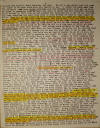
|
2.
23 April 1931.
Letter received from
Mrs. Rufus Bishop
(near Musawas) dated April 23rd, 1931.
To S. H. Gapp, Moravian Church, Bethehem
PA, p. 2.
". . . because
the bandits were blocking the way. He
got a sea going dory and came all night
in an open boat with his family to us. I
think the Lord sent him for we would
have known nothing and the rumours would
have set us wild. We tried to persuade
them we were all safe in Sandy Bay and
together remained until Friday by that
time we had packed our clothing and a
lot of our bedding and some supplies and
sent them down to John Rivers to take it
that night to Bilwi. When our people
heard we were leaving they all came and
begged us not go to, at least to stay
over Sunday, and Rufus and I did not
like running away at all, though the
Stortzes had brought us the news about
Bregenzer being killed, if anything came
up they would be all on the lookout and
would let us know and would hide us or
ship us off in a big boat to Bilwi at
once, but at least to stay over Sunday.
Our things were already in the boat but
Rufus sent word to John Rivers, we would
not be leaving that night, but still we
were uneasy for he has the best boat to
go by sea, and for us with our children,
the only one we really wanted to go in
at all, and his family was very much
frightened and might ran away to the
keys any time and if they left us we
might have a hard time. Anyway we were
staying that night, we had just put out
the light, the Indians had told us they
would be walking around all night, they
would not sleep at all some of them but
would keep watch. The Storzes were still
feeding the baby but we were just in
that glorious state where everything is
forgotten and the bed feels so good for
we were very tired. Suddenly we heard a
yell which sounded like a woman scared
within an inch of her life, yell
“Parson, Ispail Liani aula” (the
Spaniards are coming) and we who were
half asleep thought they must be so
close to the house they could not run to
tell us so as to give us some warning
had yelled. We grabbed our babies and
ran for a little clump of bush near the
school house, which is part of the
congregation watercloset, it was the
only thing we could think of for the
moment and we did not know from what
direction they were coming, we thought
we could get out of sight there, at
least they would go the mission house
before they began searching around
outside and as soon as we could find out
from which direction they were coming we
would try to go further under cover of
the bush. Soon we heard some of the boys
coming along with an accordion and jaw
bones right past the place where we were
when they were just past us they stopped
and began talking quietly and I heard
something about the Parson. We knew they
were only Miskito boys so the men went
out and asked them about the yell, where
it had come from, and where the bandits
were supposed to be, but they knew
nothing about it, had not even heard the
yell, then we were sure they had done it
themselves, but we were so wrought up by
that time that we could hardly go to
sleep, I put on an old dark dress, and
slept the rest of the night in that,
Edna had none so I gave her a dark brown
slip I have, and the men slept in Kakki
shirts and dark pants. The next day we
realized we were under such a nervous
strain that we were no good there, and
at the same time, a man came to the
house and said that a few days before
two or three strangers had been to him
in the night asking about what kind of
place Sandy Bay is and what kind of a
parson was there, thing nationality,
etc., and gave the impression that he
knew things he did not want to tell, and
did not want to be quoted about anything
he said, but he thought we would better
go sooner than we had planned, but he
said not let it be known when you preach
your farewell sermon, just do it one day
and leave either that night or the next
day, right away afterward. So we were
planning to leave for Bilwi that night,
the men were saying they would take us
to Bilwi where we would be safe or send
us here trying to collect and look
aftger the things, going together
through the two districts. On Saturday
afternoon we were just finished getting
our last things ready some food for the
journey, when someone came tearing in at
the gate so frightened and out of breath
they could hardly talk, saying the
people in Lidakura sent word they should
get the parson out of the mission house
and away as a gasboat was coming into
the lagoon, and they did not know who or
what it was, but as they had not landed
we had a little chance to get away from
the mission house at least until they
found who it was. Again we grabbed our
children and a few wraps this time, and
some of the food . . . "
|
|
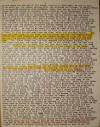
|
3.
23 April 1931.
Letter received from
Mrs. Rufus Bishop
(near Musawas) dated April 23rd, 1931.
To S. H. Gapp, Moravian Church, Bethehem
PA, p. 3.
" . . . . . . we
had ready and ran out of the house,
leaving it wide open, we ran as hard as
we could go, the people helping with the
children and things, to Usupum which is
in opposite direction from Lidakura,
there they put us into one large pitpan
and our things in another, and started
up to Winkalaya, we were to go the last
house at a certain place, and wait there
while they put a boy on a horse and sent
him to Lidakura to find out the
particulars and would send at once to us
orders were given whoever gets into this
boat does not leave the parson but goes
with him and stays as far as he goes and
needs you, or returns with him as the
case may be. We had not come to our
destination until we saw a boy on a
horse signaling us when we drew over to
the bank we were told that the gasboat
contained Johnnie Gosden and his family
he was bringing them from the Cape to
her mother who lives in Sandy Bay and he
wanted to talk to us. As soon as we
heard the name we knew it was all right,
and Johnnie probably had something to
tell us that it would be to our
advantage to hear, he also brought news
from the Cape, which the Stortezes
wanted. Nobody had been killed at the
Cape, and the planes had made the
bandits leave earlier that they
intended, and we had better proceed to
Bilwi for the present for the bandits
said they would return in nine days time
and take the Cape. The first thing they
did they smashed the wireless station,
and then began robbing, the leader gave
it out to his friends that the next trip
he would probably not be among them and
they would have to look out for
themselves. Nobody was killed either
bandits or Port people by the bombs. We
left Sandy Bay Saturday night just after
midnight, on our way to Bilwi, leaving
the house with the things all over it,
one or two boxes packed and closed at
least two of jam and cashew nuts, etc.,
packed and not closed, and other things,
curios, tiger skins, and such like all
around the place, and we do not know
whether we will ever see half of them
again. The only dishes I feel sure about
at all is the nice tea set which Iva
sent me the first Christmas we were
back, which we have with us with one or
two extra things which we could squeeze
into the box, all the rest, the china,
the lovely ice tea set you all sent
still there and unpacked. I waved
goodbye to them for if the bandits do
not molest our house, the Indians can
get in and already when we came back
that Saturday evening some things were
missing, and now we feel sure we have
gone for good more things will go, among
them about 20 good fat hens, which we
would so enjoy having down here, for
next week is Stortzes birthday and our
wedding anniversary passed with a bare
mention of the fact. We landed about
noon that day in Bilwi. There was a big
steamer in when we arrived in our little
boat, dirty and disheveled as always
from up the coast and because we were so
excited we had packed all our good
things and came away in our worst things
which we intended to take off before
leaving Sandy Bay and leave them there,
I know I had an old torn dress, dirty
white keds with a hole in them, black
stockings, which had acquired quite a
hole in the leg sometime or other and a
big native palm leaf hat which I had
worn to protect my eyes from the sun’s
glare on the water, it was the one I
usually wore when I was working in the
garden. Stortzes declare they have a few
things they would like to add to them
and we turn them over to the museum in
the Ephrata House The Contessa Ceida had
a number of tourists on board,
evidently, or else they were some of the
Americans who were leaving for the
States, anyway they looked just the
opposite from what we did. I did not
notice them so much for they did not
bother me, anyway my hearing is not so
sharp and I had to keep sharp eyes on
Bobbie on the wharf, but Mrs. Stortz
said they just looked us up and down one
after the other “Now who do you suppose
these people are and what do they want
here. Do you suppose it is safe to let
them land,” one woman said, the man who
was with her sized us up and said “Oh, I
guess it is all right for them to be
here. “ I wonder what they would have
said had they known what we really were
and where we came from, and some of the
stories we could have told them. Mr.
Woor (it is German and I do not know how
to spell it, I know that is not right,
but it is the way it sound) (sic) came
in the evening with a wireless from
Conrad saying he was to get us and the
Dannebeers [Dannebergers] out from Sandy
Bay and Yulu, he said he had sent us
both messages the day before but of
course they arrived in Sandy Bay about
the time we arrived in Bilwi. On Monday
he again received a wire from Conrad to
send us and the . . . "
|
|
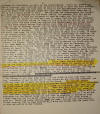
|
4.
23 April 1931.
Letter received from
Mrs. Rufus Bishop
(near Musawas) dated April 23rd, 1931.
To S. H. Gapp, Moravian Church, Bethehem
PA, p. 4.
" . . . Stortzes
to Bluefields, as well as the
Dannebergers. Rufus and Howard had sent
a wireless upon arriving that we were in
Bilwi to save him some anxiety. But
several messages had been sent to Yulu
to the Dannebergers and nothing could be
heard from them, the people who came
down always said there was no one in the
mission house in Yulu. Now we knew the
Dannebergers had planned a week in the
Tuberus for the whole family, but
whether they had gotten up there safely
or what had happened to them we could
not find out, the bandits were all
around up that way, and it seems that
the day the Dannebergers left the
railroad taking to dory for the trip up
the Bandits got to the railroad about
the same place and whether the
Dannebergers had gotten there first and
were safely beyond them before they came
out for the other side we had no way of
knowing, except that we heard nothing of
the Dannebergers, and we thought if they
had been caught it would have leaked out
somewhere as the other did at Musawas.
But it was time now for them to be
returning and how would they make the
trip down, perhaps going blindly into a
trap, it would be bad enough anyhow, but
with Margaret it would undoubtedly be
terrible. We could do nothing but pray,
inquire and worry and walk up and down
and when a message could be sent send
it, Monday evening, Mr. Woor, came again
with a wire that he was to send us to
Bluefields, I believe I wrote that
yesterday, Tuesday, the Escupa Fuego
came in leaving that afternoon for
Bluefields and so we came on, shortly
after we arrived here on Wednesday, Mr.
Shimer had a wire from the Dannebergers
that they feel safe for the present at
least in Yulu. The Escupa returned up
the coast for the Haglunds, Miss
Kreitlow and the Heaths, and we are
expecting her to return early in the
coming week. And scouts have been sent
out for Mrs. Bregenzer and her family,
and today a woman is here to clean rooms
in the school house and make them ready
for her and for the others up the coast
when they arrive. We will wait here a
little longer for our things, as Rufus
asked John Rivers to pack them up and
send them down to us rather bring them
himself to Bilwi and see that they come
on down to us here. Rufus keeps talking
about slipping back up the coast and
having communion once more among our
people as we had planned but I am a
little nervous about it, things will
quiet down as they did before and all of
a sudden he will be caught unawares,
Stortz also talks of such things, and I
do not know but that they may do it
still. I do not expect to see half of
our things, or if I do it will be only
the pieces of a lot of them. If our
things should come down soon I do not
think we will stay her very long,
otherwise it may be the end of May
before we are starting homeward, and
Rufus may even try to make the trip up
the Coast. The Spanish people and
everybody is upset about the
missionaries being molested, and I
understand the padre himself said this
would be a curse to Nicaragua, that they
are ill treating God’s servants in such
a way. When the padre speaks out that
way in church about it it makes one have
a very warm feeling for him,
notwithstanding the different point of
view we have on other things. Rufus will
return from Pearl Lagoon sometime this
afternoon and as I am making sugarcake
for the Family today and the boat is
expected in before so long I must stop
and get the mail closed up and attend to
the other things I have to. Should we
leave shortly for home, you may not have
another letter from us, but in that case
we will wire you either when we leave
here or when we arrive in New Orleans."
|
|
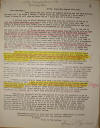
|
23 April
1931.
Letter from David
Haglund, en route from Wasla to
Kaurkirra, to Bro. S. H. Gapp, Moravian
Church, Bethlehem PA, p. 1.
"Bilwi,
Nicaragua, August 23rd, 1931. Dear Bro.
Gapp:-- ¶ Many thanks for your letter of
recent date. As now the days’ service,
are ever and I am alone I thought I
would write3 you, for planning as I do ,
to to make a long journey, it will take
me weeks before I could get off a letter
to you. ¶ I arrived here in Bilwi
Wednesday last week with the intention
of trying to work the Wanks districts
from here. I took a trip with the fruit
train into the company’s plantations
last Friday just to have a look on the
undertaking, but the Lord was (with) me
and I was able to make valuable
arrangements for my journey. ¶ Near to
the end of the line I met with one of
our Indian helpers from Bilwas Karma
Congregation. He told me that our
Evangelist at said station was expected
any time with him family, they evidently
being afraid to stay alone so long, we
not having returned to them as yet. I at
once hired a young Indian Christian to
walk over to Bilwas Karma Saturday with
a message from me that I was coming and
the Ev. Family should stay till I
arrived. I told them on which and where
to meet me with a horse, etc. I am glad
I could make that arrangement, for now
my arrival has been announced there and
the Christians will all meet me in the
new large Church on the coming Sunday
and we will then celebrate the lord’s
Supper and I will proceed to Wasla. From
Wasla to Anres, then to Old Cape, then
to Sandy Bay, then to Dakura and from
there back to Bilwi which will be
sometime in the first part of Oct. D.V.
¶ The time for a visit of this sort is
the best possible just now, for these
reasons: The Sandinistas have just been
down in our district, they got a beating
from the Guardia National near Sacklin
and were forced to retire up the river
again. It is therefore a chance for me
NOW to go there before they return
again, which might be in a couple of
weeks. Secondly the time is just now
when the Congregations will be looking
for the Holy Communion. It will
strengthen their faith and confidence
quite a bit, I hope, if I can make the
trip successfully now. I left my family
in Bluefields chiefly for the sake . . .
"
|
|
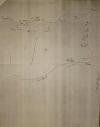
|
23 April
1931.
Letter from David
Haglund, en route from Wasla to
Kaurkirra, to Bro. S. H. Gapp, Moravian
Church, Bethlehem PA, p. 2.
Map of northeast
Nicaragua, with place-names.
|
|
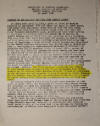
|
1.
24 April 1931.
Summary of Information Obtained from
Secret Agents.
Capt. J. P.
Schwerin, Puerto Cabezas, p. 1.
"DEPARTMENT OF
NORTHERN BLUEFIELDS ¶ GUARDIA NACIONAL
DE NICARAGUA ¶ PUERTO CABEZAS NICARAGUA
¶ 24 April 1931 ¶ SUMMARY OF INFORMATION
OBTAINED FROM SECRET AGENTS ¶ At about
0600 April 11, 1931, a group of about 60
bandits appeared in Cuyutigne. They had
spent the night at Lecus River, four
hours from Cuyutigne. These bandits were
not well armed nor did they have much
ammunition. Among their arms were two
rusty Thompson sub-machine guns.
Immediately upon their arrival in
Cuyutigne the bandits asked the number
of Guardia in Puerto Cabezas and if
there were any Americans in the
vicinity. They were told that there were
very few Guardia in Puerto Cabezas and
that there was a timber cruising squad
about four miles due south of Cuyutigne.
A group of about twenty bandits was
dispatched to the timber cruisers camp,
where they killed John D. Phelps and
John L. Pennington, both Americans, and
captured as prisoner R.P. Davis who was
killed sometime later. At about 0900 a
patrol of 40 men was sent ahead to
Logtown and about twenty men sent back
to Lecus river to summon the balance of
the bandits, about 100, who had been
left at Lecus River. In Captain Pefley’s
contact in Logtown on April 11 about 40
bandits took part and remained in
possession of the town after the Guardia
withdrew with Captain Pefley’s body.
Upon the arrival of the main body in
Cuyutigne, General Pedro Blandon sent
Captain Timoteo Altamirano with 30 men
over the trail to Auyupini. Altamirano
was followed in about an hour by Coronel
Padilla. The plans were for Altamirano
and Padilla to join forces with Blandon
at the “Y”, 34 kilometers from Puerto
Cabezas on the railroad line. Blandon
expected to meet no resistance on the
railroad and had expected to come by
train to Puerto Cabezas. Had the bandits
been met with no resistance, their plan
was to march on Puerto Cabezas from
Kilometer 23, entering by way of Tuapi
and Kamla. ¶ In Captain Pefley’s contact
two bandits were wounded and died later
at Lecus River. The buildings at Logtown
were burned during the afternoon of
April 11. Lieutenant Darrah’s patrol,
which spent the night of 11 April at
Cuyutigne was cut off from Puerto
Cabezas by the main body of the bandits
under Blandon, about 100 men. Blandon
troops were so disposed that all trails
to Puerto Cabezas were barred. Word was
passed among the bandits that a drive
would be made on Darrah on the morning
of April 12. ¶ On 12 April the
commissaries at Moss, Vaccaro and
Louisiana Farms were looted and burned.
Some of the bandits had been stationed
along Darrah’s expected route out of
Logtown, but they deserted their posts
in view of the rich loot to be obtained
by robbing the commissaries. At 0900, at
Moss Farm, April 12, in Lieutenant
Darrah’s [...] "
|
|
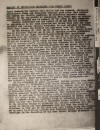
|
2.
24 April 1931.
Summary of Information Obtained from
Secret Agents.
Capt. J. P.
Schwerin, Puerto Cabezas, p. 2.
"[...] SUMMARY OF
INFORMATION OBTAINED FROM SECRET AGENTS
¶ First contact , two bandits were
killed and two wounded. Airplanes,
Lieutenant Young and Jack, flew overhead
just after this contact and bombed the
bandits positions. In Lieutenant
Darrah’s second contact of the day, at
0200 at Louisiana Farm, there were no
bandits casualties. Blandon was in
command of the enemy in both contacts. ¶
Timoteo Altamirano and his detail of 30
men did not continue to Auyupini, as he
had been directed, but turned back into
the Tigne District and looted. Padilla
continued through Auyupini to Sissin,
where they robbed the Indians and
impressed them into service. ¶ On the
morning of April 13, the disposition of
the bandit forces was as follows:
Padilla and 20 men at Auyupini; Timoteo
Altamirano and 30 men in the Tigne
District, approaching Wawa Central; and
Blandon with the balance of about 100
men in the vicinity of Logtown. In
Captain Wood’s contact there were about
60 bandits, the other 40 men of
Blandon’s group being in Moss and
Vaccaro Farms. Blandon knew of Captain
Wood’s approach, and had disposed his
troops so as to best defend the town.
However, Blandon did not expect that
Wood was so close, and the various posts
placed around the town were at their
leisure and gambling, when the first
shot was fired. The bandits were waiting
for Captain Wood, but did not realize he
was so close. When the first shot was
fired, the bandits on the surrounding
hills commenced firing and those in
Logtown dived under buildings and
commenced firing. No less than eighteen
bandits were killed in this contact and
enough others wounded so that the total
loss of life of the bandits in the
contacts of April 11, 12, and 13, was
not less than thirty, including Blandon.
Other jefes in Wood’s contact were
Coronel Juan Altamirano,a Captain
Saturnino-----(Surname unknown) and one
man dressed in black clothing and
carrying an umbrella, but no gun. This
man was thought by the Indians to be a
priest as the bandits respected him and
consulted him in every move. After the
contact in Logtown the bandits split
into small groups and reformed at Lecus
River. There were about 75 men in this
group, which was now without a leader
and disorganized. ¶ On the afternoon of
April 13, Coronel Padilla arrived from
Sissin at Kamla, nine (9) kilometers
from Puerto Cabezas over the railroad,
about three miles from the aviation
fields. Padilla left his main body in
the bush at Kamla, and he himself with
four men came as far as kilometer seven
(7) on the railroad line. With field
glasses Padilla examined Puerto Cabezas,
decided that Blandon had not…..arrived
in part, and returned, after dark to
kilometer nineteen (19) with his entire
group to await Blandon’s arrival by
train. Padilla laid an ambush along the
railroad track at Kilometer 19, and at
0300 April 14, they were notified of
Blandon’s death. Padilla then set to the
railroad bridge at Kilometer 21. Padilla
returned with his patrol to Sissin and
sent four men over the trail to
Siksikwas to find out if the main body
were coming along the railroad. On April
14, eighteen bandits with fourteen
loaded mules cleared Cuyutigni in the
direction of the Coco River. Captain
Saturnino [...] "
|
|

|
3.
24 April 1931.
Summary of Information Obtained from
Secret Agents.
Capt. J. P.
Schwerin, Puerto Cabezas, p. 3.
"[...] SUMMARY OF
INFORMATION OBTAINED FROM SECRET AGENTS
¶ [...] took command of the main body of
bandits and ordered all groups to
Laimus, on the Coco River, for
reorganization. The last group,
Padilla’s Sissin patrol, left Lecus
River on 17 April. ¶ Before departure of
the Bandits, all the Indians in the
vicinity of Auyupini were summoned and
told to get all the supplies they could,
as the bandits would return sometime,
whether it be three weeks or three
months. ¶ The bandits had seven boats
built at Bocay by the Indians, who
supply labor of all kinds. These boats
can carry thirty men each in addition to
the crew. With their present supply of
boats ,the bandits will not be
handicapped by high water in the rainy
season Their transportation problems are
solved by these boats. ¶ On Aril 18,
Adolfo Cockburn, of Saclin, Diputado
Suplente from Cabo Gracias, received a
letter from A.C. Sandino ordering
Cockburn to get word to Abraham Rivera,
jefe of the group operating on the Coco
River below Saclin, to proceed to Cabo
Gracias and capture the town without
delay. Cockburn is the Jefe
quartermaster on the river and has
organized the Indians in labor groups to
work for the Bandits. Cockburn advised
the surviving bandits leaders to return
to the Kisalaya-Laimus area for
reorganization and to await orders from
higher authority. ¶ The plans of the
bandits are believed to be that they
will remain on the Coco Rive in the
Laimus-Kisalaya area, awaiting orders,
ammunition and reinforcements from a
superior commander, possibly Sandino.
Word has been dispatched to Sandino’s
headquarters reporting Blandon’s death
and requesting his orders. It is now
believed the bandits intend to return
above Waspam. J P SCHWERIN"
|
|
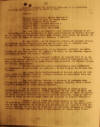
|
24 April
1931.
Letter from Gen.
Augusto C. Sandino, Cuartel
General del EDSN, to Gen. Carlos Salgado
P., Col. Inés Hernández Gómez, Tnte.
Cor. Reyes López, Sgt. Mayor Teodoro
Polanco, y Sgt. Mayor Ladislao Palacios,
Campo de operaciones militares (GN copy
of captured original, unpublished), p.
1. (Source:
NA127/38/30)
"Cuartel General del
EDSNN, 24 de Abril de 1931. ¶ Señores
¶ General de Divición, Carlos Salgado P.
¶ Coronel Efectivo Ines Hernandez Gomez.
¶ Teniente Coronel Reyes Lopez.
¶ Sargento
Mayor Teodoro Polanco y ¶ Sargento Mayor
Ladislao Palacios. ¶ Campo de operaciones
militares. ¶ Con esta fecha ha dispuesto
esta Jefatura Suprema de nuestro
Ejercito que permanezca un Jefe
expedicionario de nuestro Ejercito, en
un area que comprenda desde Plan Grande,
Loma Chata, El Ojoche, El Arco, Cuje, El
Limon de Telpaneca, Condega, y Darailí.
¶ En esa virtud, se ha dispuesto ordenar
el hermano General de Division Carlos
Salgado, para que sea el quien con su
columna expedicionaria, controle
militarmente la mencionada zona. ¶ En esa
consideracion, se ha dispuesto refundir
las actividades de las Comandancias del
Ojoche y El Arco, en las fuerzas
expedicionarias al mando del General
Salgado. ¶ Tambien se ha dispuesto nombrar
de segundo jefe de la columna del
General Salgado, al hermano Coronel
efectivo Ines Hernandez Gomez, y de
tercer jefe de la misma fuerza
expedicionaria, al hermano Teniente
Coronel Reyes Lopez. ¶ El General
Salgado, lleva instrucciones para
establecer su Campamento de operaciones
en cualquiera de los lugares de la zona
mencionada. ¶ Asi mismo lleva
instrucciones el General Salgado de
nombrar Jefe de comision militar,
quienes recorran la mencionada zona con
patrullas de nuestras fuerzas. ¶ Los jefes
quienes deberan de recorrer la indicada
zona deberan de ser entre otros, los
hermanos Polanco, Palacio, Rios, y otros
a quienes nombrará el mismo General
Salgado. ¶ Si el Sargento Mayor Ladislao
Palacio se niega a disciplinarse ante
las ordenes del General Salgado, en ese
caso, el Mayor Palacio deberá de
reconcentrarse a este Cuartel General en
donde permanecerá hasta que esta
Jefatura Suprema de nuestro Ejercito,
tenga la oportunidad de salir en guerra
campa sobra el interior de nuestra
Republica. ¶ Supongo de que todos los
jefes quienes se les dirije esta nota,
tendran conocimiento de que los vecinos
de esa zona, quienes se han presentado
al enemigo, han manifestado por escrito
a esta Jefatura Suprema, de que lo han
hecho por que con mucha tardansa se
cruzen nuestra columnas expedicionarios
en los lugares por donde ellos viven.
..."
|
|
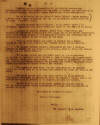
|
24 April
1931.
Letter from Gen.
Augusto C. Sandino, Cuartel
General del EDSN, to Gen. Carlos Salgado
P., Col. Inés Hernández Gómez, Tnte.
Cor. Reyes López, Sgt. Mayor Teodoro
Polanco, y Sgt. Mayor Ladislao Palacios,
Campo de operaciones militares (GN copy
of captured original, unpublished), p.
2.
(Source:
NA127/38/30)
"... Tambien tendran
conocimiento de que existen muchas
rivalidades entre los jefes menores de
esa zona, y creemos que habiendo un jefe
expedicionario, podran las cosas caminar
mas satisfactoriamente. ¶ No se me oculta
de que entre Mayor Palacio, Mayor
Polanco, y otros jefes, hayan antipatias
con las que perjudican, aunque ellos no
lo crean, a nuestra causa. ¶ Nuestro
hermano General Salgado, es un hombre
serio y le considero capasitado para
poner todas las cosas de esa zona en su
lugar. ¶ Tambien el General Salgado, podrá
sacar comisiones, por Mozonte, La
Concordia, y cualquiera otro lugar que
él lo estime conveniente pues se le
ordena pararse en esa zona, para ejercer
una vigilanza mas de serca en los
asuntos de los vecinos de esa zona.
¶ Toda
la gente armada que tiene el Coronel
Reyes Lopez, deberá de ponerla a las
ordenes del hermano General Carlos
Salgado. ¶ El hermano Ladislao Palacios,
Comandante de Yali y Condega, tambien se
pondrá con las armas a sus ordenes, bajo
la direccion inmediata del General
Carlos Salgado. ¶ El General Carlos
Salgado podrá hacer de que se mantenga
en El Arco de Comandante de los Pueblos
de Yali y Condega el hermano Ladislao
Palacio. Pero esto será siempre que
convenga la permanencia del Mayor
Palacio con ese cargo. Nosotros no
queremos que existan en ningun lugar
Jefes que aflijan en alguna forma a los
vecinos. ¶ Por aparte de esta nota, van
los nombramientos de segundo jefe y de
tercer jefe de la columna expedicionaria
al mando del General Salgado. ¶ Cuanto el
primer jefe, por algun motivo no pueda
desarrollar alguna actividad lo deberan
de hacer el segundo y tercer jefe, y
cuando no puede ni el primero ni el
segundo, lo hará el tercero. ¶ Espero pues
de que a los jefes a quien les llegue
esta nota, se sirvan acusar recibo
inmediatamente a esta Jefatura Suprema
de nuestro Ejercito. ¶ Sinceramente
vuestro hermano, ¶ Patria y Libertad /s/ A. C. Sandino"
|
|
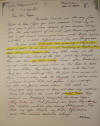
|
1.
26 April 1931.
Letter from David
Haglund, Kaurkirra, Nicaragua, to
Dr. S. H. Gapp, Moravian Church,
Bethlehem PA, p. 1.
"Dear Bro. Gapp.
-- ¶ The letter I wrote on the way from
Wasla to here I hope you have received.
I will try to give you a few more
details of our troubles today, but the
real extent of it I do not know myself
till I get direct communications with
Wasla again, and that is a little
difficult and for me dangerous. ¶ The
plan of the Sandinistas was evidently—I
have also hear it said—to be over us at
Good Friday or Easter. But their doings
in Musawas plus very little water in the
Waspuc at this time of the year
evidently delayed them, all that was
God’s mercy. Travel after Easter Lent my
wife with 2 men went down to Old Cape to
take up our children, they having been
there with Bro & Sr. Storz from the
middle of Febr., the first time we run
for them. I went along with the
“Nazareth” to Andres where I intended to
give H.C. (Holy Communion) and perform a
few marriages, etc. till my family would
return. That week on Thursd (9th) they
arrived at Ulwas and that very suddenly.
Friday 10th before the news had reached
Wasla they arrived on horseback,
surrounded the house before they broke
in. Not finding us home they searched
for valuables such are few among
missionaries. They took my wife’s
dresses, my suits, typewriter and other
smaller articles along . . . "
|
|
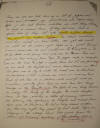
|
2.
26 April 1931.
Letter from David
Haglund, Kaurkirra, Nicaragua, to
Dr. S. H. Gapp, Moravian Church,
Bethlehem PA, p. 2.
". . . ¶ They, so
we are told, tore up a lot of papers and
books and smashed up furnitures, etc.
before they left. I do not know whether
or not they returned to look a second
time. If they did our loss is great, but
if they did not, quite a few things are
saved by Indians. In what condition and
how much or how little we get back is
still to be seen, yet hope a good thing.
I was in Andres when the news reached
me. The Evangelist in A. Br. Leo Muller
with family went with me to Boom. There
we met our boat coming from Cape. The
people made a camp for us in the bush.
We slept 2 nights there but did not feel
safe so we took the Nazareth and went
downstream on (?). Our plan was to try
to walk the beach over to Honduras to
Kaurkira. I had 2 scenes in view in
coming here. First of all this is a
station with enough work for 3 workers,
secondly, from here we will hear how
things develop in the Wangks river. We
felt it our duty, however, to notify
Bro. Stortz of the danger. We went
therefore down to Cape, sent him a
letter of warning, returned the
following day upstream to Kluki and
crossed from there over to Honduras. We
had a very narrow escape, for that very
night they passed by and took Cape, we
sleeping in the village about 800 yards
from the river, not knowing anything of
their passing till in the morning. . . .
"
|
|
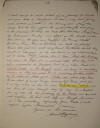
|
3.
26 April 1931.
Letter from David
Haglund, Kaurkirra, Nicaragua, to
Dr. S. H. Gapp, Moravian Church,
Bethlehem PA, p. 3.
". . . I don’t
want to write details of our journey to
Kruta and from there to Kaurkira. It was
a very hard journey with children and
sacks in the burning sun along the
beach. But the Lord supplied the needed
strength, according to His promises. At
Kruta we took Miss Kreitlow along,
passed the Kruta river—(?)—and slept on
the beach under God’s hand in the open
air, thankful for having reached
Honduras. From there to Kaurkira we took
it slowly. We are here just one week
today, Mond., The Heaths do all they can
for us, as soon as the new house is up
accommodations will be better. While I
write this I hear that the Sandinistas
went down to Cape for a second “call”.
How this will end is impossible to
foretell. But is clear that we cannot
work in the Wangks river as long as
conditions remain as they are now. We
are awaiting further orders as to where
we shall go or whether we shall stay
here. We are short of many things,
having left Wasla just for 4-5 days when
we had to run. But we are alive, and we
learn to come through day by day. It is
hardest for my wife, she lost
practically all her dresses, but we must
not complain. The Lord will help us
through. As soon as I hear something
definitely from Wasla I will report
again meanwhile I remain ¶ Yours in His
service. ¶ David Haglund"
|
|
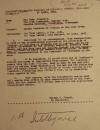
|
27 April
1931.
Adolfo Cockburn of Sacklin on the Coco
River. Memo from
Gen. C. B.
Matthews, Jefe Director GN to
Col. John Marston, Bluefields.
"HEADQUARTERS
GUARDIA NACIONAL DE NICARGUA MANAGUA
NICARAGUA ¶ 27 April, 1931 ¶ From: The
Jefe Director. ¶ To: The Area Commander,
Eastern Area, Guardia Nacional,
Bluefields, Nicaragua. ¶ Subject: Adolfo
Cockburn o fSacklin on the Coco River. ¶
References: (a) You Letter, 9 Feb. 1931.
(b) Your Letter, this subject, 25 April,
1931. ¶ 1. Reference (b) is
acknowledged. This headquarters, in view
of the circumstances surrounding the
activities of Cockburn, is desirous of
bringing him to justice, but is
reluctant, on account of his official
capacity, immunity from arrest, and the
fact that all reports against him are
indefinite, difficult of proof and
emanate from Americans, to make further
representations to the President of
Nicaragua in the case. ¶ 2. It is
suggested, if practicable and if
Cockburn’s actions are known to
responsible Nicaraguans, for instance a
person like the Jefe Politico, that as
many as can and will state in writing
their knowledge of the man and his
activities with the bandit forces, do so
either by direct reports to the
President, furnishing your office a
copy, or by submitting their reports to
you. ¶ 3. Such reports, with the
information now on hand will enable this
office to make recommendations to the
President for the removal of Cockburn
from office and appropriate disciplinary
action. ¶ Walter G. Sheard, ¶ By
direction."
|
|
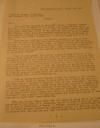
|
1.
28 April 1931.
Letter from
Lisandro Salazar, Collector of
Customs, Cabo Gracias a Dios, to
Collector General of Customs & Resident
High Commissioner, Managua, p. 1.
"Sir: ¶ This port
was captured by the bandit troops of
General Sandino at 5 am, on the
fifteenth of this month. They remained
here until seven that evening returning
up the river to Saclin, having come from
that place. Many days before it was
rumoured that Puerto Cabezas and Cabo
Gracias a Dios would be attacked
simultaneously. Early in March I advised
Mr. Downing the Collector of Customs at
Puerto Cabezas of this rumor, and
certain things which I told him turned
out to be correct. ¶ There was no
shooting as the bandits entered the town
as this port has not had a garrison for
over a year, nor have we had the
protection of even one policeman. Those
who feared something disagreeable was
about to happen did not have time to
hide, much less to escape as the bandits
had all the exits cut off. I was
tranquilly waiting to see what would
happen and was seated when four armed
men of unfriendly appearance entered. ¶
“What is your name?” they asked. I gave
my name and that of my office. They
replied “Deliver the arms you have
hidden, and open very quickly the doors
to all departments and do not move”. I
answered that I would open all the doors
with pleasure but that it was impossible
to give them arms because I had none. I
could see that I was in a very dangerous
position as two of them who appeared to
be chiefs were intoxicated. At that
moment my wife informed me that General
Rivera was at the door and wished to see
me. The armed men let me go and ordered
my wife to open all trunks which she did
and she watched them do what they
pleased. They mixed everything up. ¶ I
had an interview with General Rivera the
leader of the troops and he did not
treat me badly. He only asked me if
there was money in the safe, which I
opened to show him that it only
contained a few dollars, and documents
which showed money had been remitted to
Bluefields. I explained to him the bad
economic situation and that no
merchandise was being imported on
account of the lack of business. The day
before we had heard that these troops
were about to arrive any moment, and
therefore I was prepared for any
emergency and destroyed copies of
letters which might have compromised me.
¶ From the Custom House they took six
cases of shoes which had been deposited
by the firm of J. Asmussen, valued at
$500.00 more or less, and a case of
medicines of Manuel C. Bordas, valued at
about $50.00 and had not been entered
because the necessary permit for
granting entry in accordance with the
law had not been received. They also
took from the [...]"
|
|
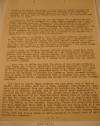
|
2.
28 April 1931.
Letter from
Lisandro Salazar, Collector of
Customs, Cabo Gracias a Dios, to
Collector General of Customs & Resident
High Commissioner, Managua, p. 2.
"[...] Customs a
32 caliber long barrel revolver with its
leather holster and a revolver 38
caliber which was personal property of
the Collector of Customs. Other personal
things taken are not worth mentioning.
They lamented the fact that the Customs
House was empty, in other words that
there was no cargo. ¶ I know Mr. Rivera
before and for that reason the situation
was not tragic for me, but he declared
in a very emphatic manner, that I was in
a very delicate position, “Because of
the circumstances of my holding
Americans, and he wished me to
understand as he was now commander of
the troops I would suffer no injury,
although the troops requested that
strict measures be taken”. He advised me
to be prepared for the future as on
another occasion he might not be in
command of the expedition. I request you
to take note of this declaration. ¶
Shortly after I received a visit from
General Humberto Caracas with his two
aids. They asked me for arms and money,
and I explained that I had already
talked that matter over with General
Rivera, but I spoke to them in as
diplomatic a manner as the serious
situation demanded. They also said I was
in a very delicate predicament. I had
known General Caracas in El Bluff during
the revolution of 1926. ¶ After these
gentlemen a Spanish official entered,
armed with every weapon invented up to
date, and asked me I was voluntarily
dispose to write a kind thought about
General Sandino in a book which he gave
me. I really wrote about fifty
expressions. He then asked me to affix
the official stamp, which I did. If I
denied their wishes, you can imagine the
result: DEATH. ¶ I also wish to inform
you that the store of the Chinese
merchant, Wing Chung, was entirely
ransacked. His losses amounted to about
five thousand cordobas. The shelves were
completely cleaned out. The store of J.
Asmussen was partly ransacked owing to
the fact that the Jefe directed the
sacking. I estimate his losses at three
thousand dollars more or less. It must
be remembered that in January this year
the Waspook branch store of Mr. Asmussen
was looted with a loss of two thousand
cordobas. ¶ The store of Albert Fagot
suffered the same fate, with a loss of
$2,500 more or less. Each one of them,
Asmussen, Wing Chung, and Fagot were
insured against fire and robbery by
bandits. Mr. Fagot as is well known is
an American citizen, and as the bandit
chief expressed it, his head was not cut
off because Mr Rivera first chief of
Sandino’s troops was employed by Mr.
Fagot for about twenty five or thirty
years and was the recipient of many
favors from him. It is significant that
Mr. Fagot is selling his properties at a
loss in order to go and live with his
family in New Orleans, Louisiana, U.S.A.
His properties which are well known and
which have a good value are now being
sold at a loss for about $20,000.-
receiving $1,000.- down and the balance
on time, payments to be made whenever
possible. He is leaving the country
after living here for thirty years or
more, dedicated to honest work of
agriculture and commerce. [...]"
|
|
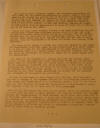
|
3.
28 April 1931.
Letter from
Lisandro Salazar, Collector of
Customs, Cabo Gracias a Dios, to
Collector General of Customs & Resident
High Commissioner, Managua, p. 3.
"[...] The
Tropical Radio Telegraph Company was
partially destroyed as is well known,
but the towers and machinery are intact.
Experts from the American war vessels
who arrived here to determine the damage
estimated the loss to be $1,500.00 or
$2,000.00 and it is said, that their
property was also insured. Mr. Lester,
the chief operator was saved from
certain death, because he spent that
night aboard his “Yate” anchoring
outside the harbor. He had that
facility. Besides the property destroyed
75 cases of gasoline and 20 boxes of
Mobile Oil A, belonging to the station
were taken. ¶ There were also other
threats, besides a few small robberies,
but all depredations stopped when
airplanes arrived about 3.30 pm and
threw as many as fourteen bombs without
giving any warning. When the Sandino
forces heard the noise made by the
approaching engines, they took the red
and black badges off their collars and
hats and put them in their pockets, then
hid themselves in or under the houses
thus showing their cowardice. ¶ The
store of Mr. Manuel C Bordas was
seriously damaged by the bombs. The
bombardment would have taken serious
proportions with great losss if it had
not been for the fearlessness of Mr.
Hugo Fagot in raising the American flag
on his father’s house. The aviators
declared that this act saved the
situation. Of course Mr. Fagot was in
grave danger from the Sandinistas. ¶ The
store of the merchant Mr. Abraham
Martinez was sacked. These stores of
this gentleman have been constantly
looted and sacked since April 1928. He
declares that his losses amount to
$2,000.00 or more. He has completely
withdrawn from doing business on the
river, which concludes all commerce on
the river as the branch of Mr. J.
Asmussen in Waspook has been entirely
closed, as it is impossible to maintain
commerce on the river unless guarantees
are given, and the property and
interests of foreigners are protected. ¶
It must be mentioned in this report that
the Rev. Earl Bregenser, who was in
charge of the Musawas station for the
Moravian Mission and Book store, was
assassinated in an atrocious manner,
vile if you can so call it, just because
the Moravian institution is maintained
by American capital. I beg you to take
note of this paragraph. ¶ And all the
foreigners who live on the river, those
who produce, those who give life and
work to many Indians, are running
through the jungles seeking the
companionship of wild animals, which
after all turns out to be the best. And
the commerce is seriously affected,
because aside from the robbery of the
merchandise, merchants were ordered to
hand over any money they had. Therefore
commerce will be dead or is already
dead. The public morale is affected and
about to disappear altogether, because
banditry exists even in sporadic groups.
[...]"
|
|
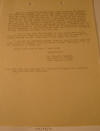
|
4.
28 April 1931.
Letter from
Lisandro Salazar, Collector of
Customs, Cabo Gracias a Dios, to
Collector General of Customs & Resident
High Commissioner, Managua, p. 4.
"[...] Here it is
said the bandits will return within a
few months. The bandits so advised. And
I have also heard from other sources
that they expect arms from some of the
sister republics of Central America. It
may or not be true. But if the Guardia
do not intend to stay here for any
length of time, everything else here
will be lost. If the bandits return with
a chief unknown to these people, not
only will the village be reduced to
ashes but many lives will be sacrificed.
This is not a sentimental opinion. I
believe that if a suitable number of the
National Guard are not garrisoned here,
it will be necessary to close the Custom
House as it will be impossible to keep
employees, no matter who they are. ¶ I
wish to say that the Governor of this
region was not in the Port at this time.
The day before he left with his family
for health reasons to Cabo Viejo about
eight miles from here. ¶ I invited the
Governor several times to come to this
port and confer with the Captain of the
American gunboat “Ashville”, but it was
impossible to reach him. ¶ Please take
note of what I have said. ¶ Respectfully
¶ (a) Lisandro Salazar, ¶ Collector of
Customs, ¶ Cabo Gracias a Dios. ¶ P.S.-
The only one here was the Director of
Police who rendered very satisfactory
services."
|
|
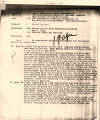
|
1.
29 April 1931.
Patrol Report,
1st Lt. Clyde R. Darrah,
Bluefields, to Col. John Marston,
Bluefields, p. 1.
"From: First
Lieutenant Clyde R. Darrah, G.N. ¶ To:
The Area Commander, Area of the East,
Guardia Nacional, Bluefields, Nicaragua.
¶ Via: (1) The Department Commander,
Department of Northern Bluefields,
Puerto Cabezas, Nicaragua. ¶ Subject:
Patrol Report ¶ Reference ; (a) Letter
of the Area Commander, dated 22 April
1931. ¶ (b) General Order No. 109-1929.
¶ Enclosure: (1) 1.- In accordance with
the references the following report is
submitted:- ¶ 11 Apr.31.- 12:30 P.M.
received report that Captain Harlen
Pefley had been killed and Raso Manuel
Morales had been wounded by bandits at
Log Town. ¶ 1:45 P.M. patrol including
myself, fifteen enlisted men, and one
civico, Mr. Beardsley cleared Puerto
Cabezas for Log Town by train, arrived
at Tigne Junction (Moss Farm) at 4:35
P.M. where four enlisted from Toledo Wye
were waiting our arrival. Continued on
to Log town with eleven enlisted and one
civico by train, having eight men to
follow by motor car. Arrived Log town
5:15 P.M. where Captain Pefley and
patrol had contact, and where Captain
Pefley was killed, searched all of Log
town and vicinity. Commissary, house of
the Overseer and food shed had been
burned down. At 6:30 P.M. left Log town
with ten enlisted and one civico. Mr.
Beardsley for Cuyutigne where the
bandits had been reported as having gone
after leaving Log Town. 8:30 P.M.
arrived Cuyutigne, searched there and
immediate vicinity laid in ambush until
4:30 A.M., 12 April 31. ¶ 12 Apr. 31.-
Left Cuyutigne at 5:15 A.M. arrived Log
Town 6:00 A.M. Researched Log Town 6:45
A.M. left Log Town arrived Louisiana
Farm where we found the balance of the
Guardia patrol awaiting us. We were
notified that one half hour after our
patrol left Moss Farm by train and motor
car, that bandits attacked there,
killing eight men, four of which were
Americans, two were commissary men, and
two unknown. ¶ There were other bodies
scattered between Moss Farm and
Louisiana Farm 8:15 A.M. left Louisiana
Farm for Moss Farm where bandits were
still in force 8:30 A.M. had contact
with bandits forcing them to retire.
Raso Pascual Rivera was [...]"
|
|
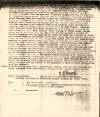
|
2.
29 April 1931.
Patrol Report,
1st Lt. Clyde R. Darrah,
Bluefields, to Col. John Marston,
Bluefields, p. 2.
"[...] lines had
been cut. Tried to send report into Port
by motor car running one, but plan did
not work as the Snaki Bridge had been
tampered with. Two amphibian planes
arrived about 11:30 A.M. bombed at
Vaccaro Farm, and in the woods where it
was later learned that bandits had been
hiding. 11:40 A.M. patrol including
myself, thirteen enlisted and Mr.
Beardsley cleared for Vaccaro and
D’Antoni Farms, arriving at D’Antoni at
1:30, enroute, searched Vaccaro and
vicinity, also vicinity of D’Antoni. At
Vaccaro Farm the bandits burned the
commissary, the mandador’s house and
threw other houses belonging to the
laborers. Arrived Moss Farm at 3:00 P.M.
Mr. Austin Murphy and one colored man
arrived and notified me, that five
hundred (500) more bandits under Pedron
were enroute from the Wankgs River and
intended to take Puerto Cabezas. 3:30
P.M. left Moss Farm with intentions of
cutting off bandits at Wakiwas. Had
contact with bandits while trying to
cross Snaki Bridge where rails had been
torn up. While Mr. Beardsley with a
detail of Guardia repaired the rails, a
detail under me held the bandits in
check and forced them to retreat. No
casualties among Guardia, while
repairing rails on the far side of the
bridge two planes arrived and made a
drop, wanting to know where they could
drop provisions and ammunition. Did not
have time to answer, but made signals
toward Wakiwas. 4:30 P.M. arrived
Wakiwas. Received rumor there, that
bandits numbering five hundred (500)
under Pedron were coming through to Port
burning and robbing on the way in.
Intended to kill all machos (American).
In Wakiwas we met Sergeant Taylor with
eleven guardias, one applicant and one
civico as re-inforcements. Made Camp at
Wakiwas, making tactical preparations
for a defense. 7:00 PM. In telephone
communications with Guardia Headquarters
in Puerto Cabezas, explained the
situation, and asked for food and
ammunition. 9:00 A.M. received code
message from Captain Wood, that he would
arrive about 6:00 A.M., 13 April 31 with
re-inforcements, food and ammunition,
and for my detail to be prepared to move
forward immediately upon his arrival. ¶
13 Apr. 31.6:30 A.M. Captain wood,
Lieutenant Simmer and six enlisted men
arrived. Captain Wood immediately taking
charge of the entire patrol. (signed)
CLYDE R. DARRAH [...]"
|
|
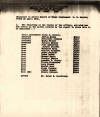
|
3.
29 April 1931.
Patrol Report,
1st Lt. Clyde R. Darrah,
Bluefields, to Col. John Marston,
Bluefields, p. 3.
"[...] Enclosure
to Patrol Report of First Lieutenant
G.N. Darah, dated 29 April 1931. ¶ 1.
The following is the roster of the
officer, enlisted men and civico on the
patrol covered by the report to which
this is an enclosure:= ¶ First
Lieutenant Clyde R. Darrah. ¶ Sergeant
Adrian Saens #3486 ¶ Corporal Sebastian
Jimenez #3427 ¶ Corporal Earix Watson
#2562 ¶ Corporal Joaquin Zelaya 31838 ¶
Raso Jose Aguirrez #5510 ¶ Raso Simeon
Blandon 31943 ¶ Raso Felesito Cruz #1945
¶ Raso Charles Casanova #2535 ¶ Raso
Sabas Cornejo #3675 ¶ Raso Pedro Duran
#5425 ¶ Raso Thomas Davis #3027 ¶ Raso
Justino Fletes #3746 ¶ Raso Vivian
Hernandes #3054 ¶ Raso Levy Pinock #4281
¶ Raso Manuel Seas #3487 ¶ Raso Diego
Vasquez #3429 ¶ Raso Julian Zepeda #2259
¶ Raso (HC) Fermin Perrera #2323 ¶
CIVICO Mr. Ralph R. Beardsley."
|
|
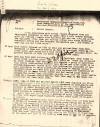
|
29 April
1931.
Patrol Report,
Capt. O. A. Inman, Puerto
Cabezas, to Col. John Marston,
Bluefields, p. 1.
"From: Department
Commander, Capt. O.A. Inman, G.N. ¶ To:
Area Commander, Area of the East,
Guardia Nacional,¶ Bluefields, Nicaragua
¶ Subject: Patrol Report. ¶ 1.- In
compliance with verbal orders received
from the Department Commander at 1200 22
April 1931 I left Puerto Cabezas with
one officer, twenty five enlisted men
and one civilian guide. The equipment
other than the service rifles were three
Browning Automatic rifles and two
Thompson sub-machine gun. The event of
each day are set forth below: ¶ 22 Apr.
Left Puerto Cabezas at 1430 by rail and
arrived Moss Farm 2300. Detrained at
Moss and proceeded on foot to Louisiana
where we procured three pack mules and a
mule driver from the Standard Fruit Co.
Arrived Logtown at 0230, 23 April and
went into camps. ¶ 23 Apr. Left Log Town
0600 following railroad to Cuyutigne.
Took trail to Lecus creek, arrived Lecus
1400. Left trail at Lecus and proceeded
up Lecus creek. At 1500 surprised and
engaged a group of approximately twenty
bandits. Four bandits were killed and
three known to be wounded. Engagement
lasted about five minutes; the remainder
of bandits scattering in thick
underbrush. One sack of Company stores
(blankets, shoes, etc.) and four guns
were captured; one Winchester 22
caliber; one 16 gauge breech loader and
two twelve gauge muzzle loaders. The
patrol then proceeded rapidly back into
the Lecus Saklin train and advanced
toward Saklin. Went into camp on the
trail six kilometers out from Lecus
1730. ¶ 24 Apr. Broke camp at 0700 and
arrived Saklin 1300 same day. Only one
Nicaraguan, Slate, and a few Indian
families remained in town. Saklin had
been completely sacked with the
exception of one store owned and
operated by Adolf Cockburn. The bandits
group under command of Abraham Rivera
consisted of about forty five armed men
and about sixty Indians as boatmen. They
arrived in Saklin Friday afternoon 17
April 1931 and left Saturday morning 18
April 1931, proceeding up river with
eight large boats. The patrol spent
night of 24 April in Saklin. ¶ 25 Apr.
Three Indians returning down river
reported that they had been used by
Rivera as boatmen and that the Rivera
group having met up with a few of the
remaining men from the Blandon group had
proceeded up the River, from Waspuk on
Tuesday 21st April 31, with destination
Segovia. Left Saklin at 1230 and
proceeded down the Wanks River by barge.
At 1800 picked up small motor boat
belonging to Mr. Lester from the Cape.
This boat had been used by the bandits
in their trip up the river and left on
the bank by them when it ran out of
gasoline [...]"
|
|
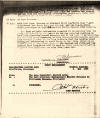
|
29 April
1931.
Patrol Report,
Capt. O. A. Inman, Puerto
Cabezas, to Col. John Marston,
Bluefields, p. 2.
"[...] arrived
Cape Gracias a Dios way down river made
reconnaissance at Wasla, Kum, Jacinto
Chow, Andres, Boom and Sawa. In each
place the bandits had cleaned out all
food and serviceable clothing. The
people were still much frightened and in
fear of the bandits return. ¶ 27 Apr. In
Cape Gracias. ¶ 28 Apr. 0600 left Cape
Gracias on Standard Fruit tug “North
Star”. Left detachment one First Sgt.
And six men and one B.A.R.; three weeks
provisions at Cape. Arrived Puerto
Cabezas 1600 hundred. ¶ 2.- From
reliable information received it is
believed that the group encountered by
the patrol is the one reported previous
to have been operating around Auyupini
and to the best of my knowledge was the
last group remaining in this district.
Informations gathered from several
persons at the Cape indicate that the
bandits under Rivera are endeavoring to
reach Bocay on the coco Rive where they
have erected a long house, between one
hundred and fifty, and two hundred feet
long, which will be used as their
headquarters. It is believed that
Airplanes can wipe this place out. ¶
(signed) CAPTAIN, G.N. O. A. INMAN FIRST
ENDORSEMENT ¶ HEADQUARTERS EASERN AREA
GUARDIA NACIONAL ¶ Bluefields, Nicaragua
4 May 1931 ¶ From: The Area Commander,
Eastern Area. ¶ To: The jefe Director,
Headquarters Guardia Nacional de
Nicaragua, Managua, Nicaragua. ¶ 1.
FORWARDED. ¶ (signed) JOHN MARSTON"
|
|
|
|
|
PREVIOUS
NEXT
|
|
|
|
|
|
|
|

